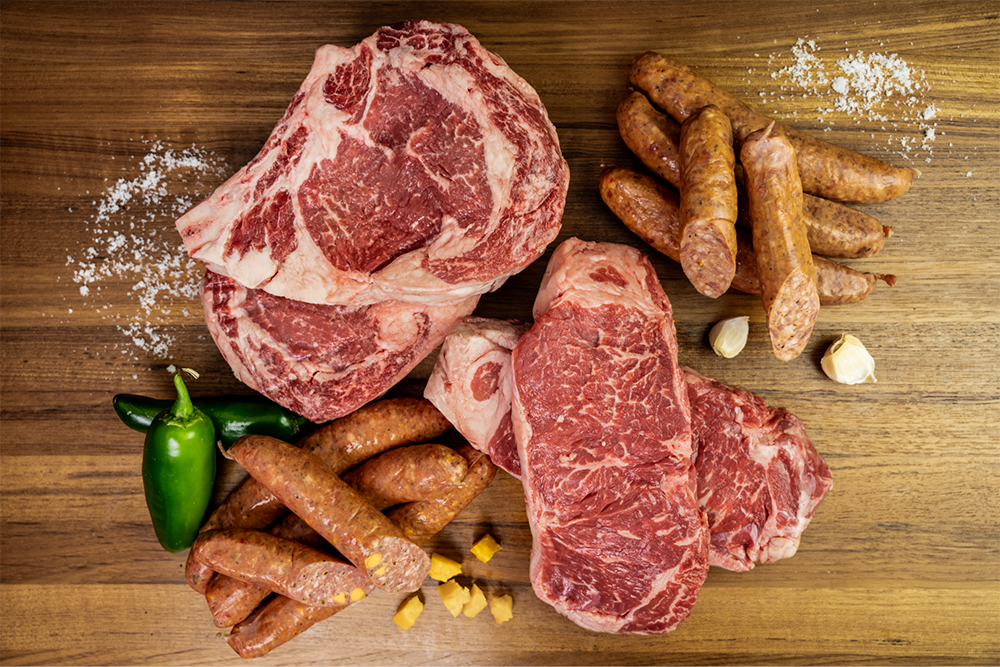Bagley Farms Meat Market Edwardsville IL: Your Go-To Destination for Regional Meat Choice
Bagley Farms Meat Market Edwardsville IL: Your Go-To Destination for Regional Meat Choice
Blog Article
Reveal the Art of the Butcher's Cut in a Modern Meat Market
In the ever-evolving landscape of modern-day meat markets, the butcher's cut has transcended its traditional origins, merging old-time craftsmanship with modern practices. What genuinely sets the contemporary butcher apart is their ability to create a much deeper connection in between consumers and the beginnings of their meat.
Evolution of Butchery Methods

The mid-20th century saw butchery strategies better improved by scientific insights right into muscular tissue biology and meat aging, boosting both tenderness and preference. Technologies like vacuum cleaner packaging and refrigeration extended item shelf-life, enabling butchers to diversify offerings and boost top quality control. This period also noted the increase of specialized tools, such as band saws and meat slicers, which boosted precision and performance in meat processing.
Digital systems now help in tracking animal provenance and maximizing cuts to satisfy details customer choices. Additionally, a rebirth in artisanal butchery has emerged, mixing traditional skills with modern-day knowledge to cater to customers looking for ethical and sustainable meat alternatives.

Comprehending Meat Cuts

Understanding the details of meat cuts is vital for both butchers and consumers looking for high quality and value. For butchers, exact cuts reflect ability and respect for the craft, making certain very little waste and optimal return.
The primary groups of meat cuts include primitive, sub-primal, and retail cuts. Primal cuts, such as the loin, rib, and chuck, are the large areas initially divided from the carcass. Butchers then damage these down further right into sub-primal cuts, before ultimately producing retail cuts offered to consumers, like ribeye or tenderloin. Each phase requires cautious focus to anatomical framework and muscular tissue structure.
Comprehending muscular tissue composition is important; muscular tissues used a lot more regularly by the animal tend to be tougher and are best matched for slow-moving cooking techniques, while less-used muscular tissues, like those located in the loin, are more tender and suitable for barbecuing or roasting. Knowledge with these differences empowers consumers to make educated options, boosting their cooking endeavors.
Choosing High Quality Meat
Selecting the best meat involves even more than just picking an aesthetically attractive piece from the display screen. The art of choosing quality meat calls for a critical eye and knowledge of details qualities that represent freshness and quality.
Second of all, consider the marbling, which describes the white streaks of fat within the muscle. Correct marbling is an essential indicator of see post tenderness and taste, as it melts throughout cooking, boosting the meat's juiciness. Keep in mind, greater marbling commonly correlates with exceptional high quality cuts, such as USDA Prime.
Appearance is one more essential aspect; meat needs to feel firm to the touch, not slimy or extremely soft. Furthermore, bear in mind the scent. Fresh meat must have a clean, neutral odor, without any type of sour or off-putting odors.
Combining Cuts With Cooking Techniques
Efficiently coupling cuts of meat with the appropriate cooking methods is necessary for attaining optimum taste and appearance. These approaches boost the meat's all-natural tastes and ensure a juicy finish.
On the other hand, tougher cuts like brisket and chuck roast are rich in collagen, which breaks down into gelatin when cooked gradually. These cuts are ideal for braising or slow roasting, permitting the about his meat to soften with time and create deep, intricate tastes. Cuts such as short ribs and pork shoulder fare well with slow-cooking approaches, where prolonged cooking times change their robust structures right into delicious meals.
Lamb shanks and oxtail, which need extended cooking to tenderize, are excellent prospects for stewing or slow simmering. These approaches coax out rich, hearty tastes while preserving moisture. By understanding the one-of-a-kind features of each cut, cooks and home cooks alike can boost their cooking creations, ensuring each recipe is both satisfying and memorable.
The Butcher's Function Today
Navigating the advancing landscape of the contemporary meat market, the butcher's duty today extends past plain preparation of cuts. Contemporary butchers are cooking artisans, instructors, and advocates for lasting techniques.
Along with crafting exact cuts, butchers now engage straight with customers, providing cooking suggestions and tailoring options to suit private demands and choices. Their expertise in meat aging, marbling, and flavor accounts encourages consumers to make educated decisions, boosting their culinary experiences. This customized service exemplifies the butcher's progressing duty as a relied on advisor in the kitchen area.
Additionally, butchers dig this are crucial in minimizing waste, using whole animals to produce varied items such as sausages and supplies - bagley farms meat market edwardsville il. This thorough approach not only respects the animal but likewise lines up with contemporary sustainability goals. By doing this, the contemporary butcher personifies both practice and technology, adjusting to an ever-changing market while maintaining the virtuosity and honesty of their craft

Conclusion
Proficiency in comprehending diverse meat cuts and quality indications encourages butchers to offer enlightened suggestions, straightening specific cuts with ideal food preparation approaches. By honoring historic techniques while embracing contemporary needs, the butcher's duty remains important in today's advanced meat market.
Report this page